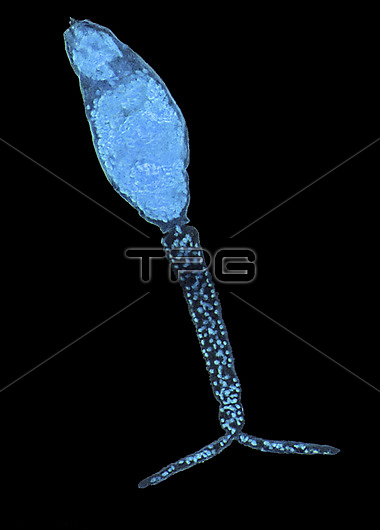
Schistosoma. Light micrograph (LM) of a circaria, the final larval stage of the blood fluke Schistosoma mansoni, the cause of schistosomiasis (bilharzia). Note the prominent forked tail. Adult flukes inhabit blood vessels of the small intestines, causing dysentery and diarrhoea. Their spiked eggs cause anaemia, inflammation and tissue scarring. The circariae (larvae) develop in freshwater snails (the intermediate host) and are released into the water. Humans (the final host) are infected while bathing or working in contaminated water. S. mansoni is widespread in Africa, the West Indies, and South and Central America. Magnification: x180 when printed at 10 centimetres wide
| px | px | dpi | = | cm | x | cm | = | MB |
Details
Creative#:
TOP27383452
Source:
達志影像
Authorization Type:
RM
Release Information:
須由TPG 完整授權
Model Release:
N/A
Property Release:
N/A
Right to Privacy:
No
Same folder images:

 Loading
Loading